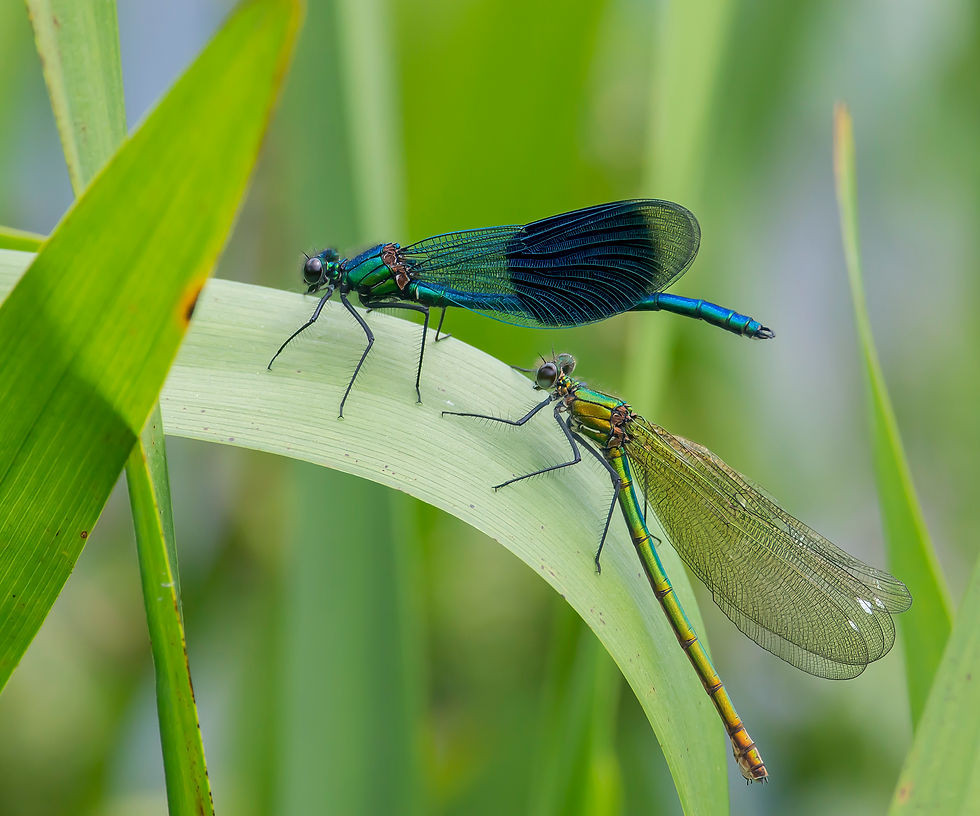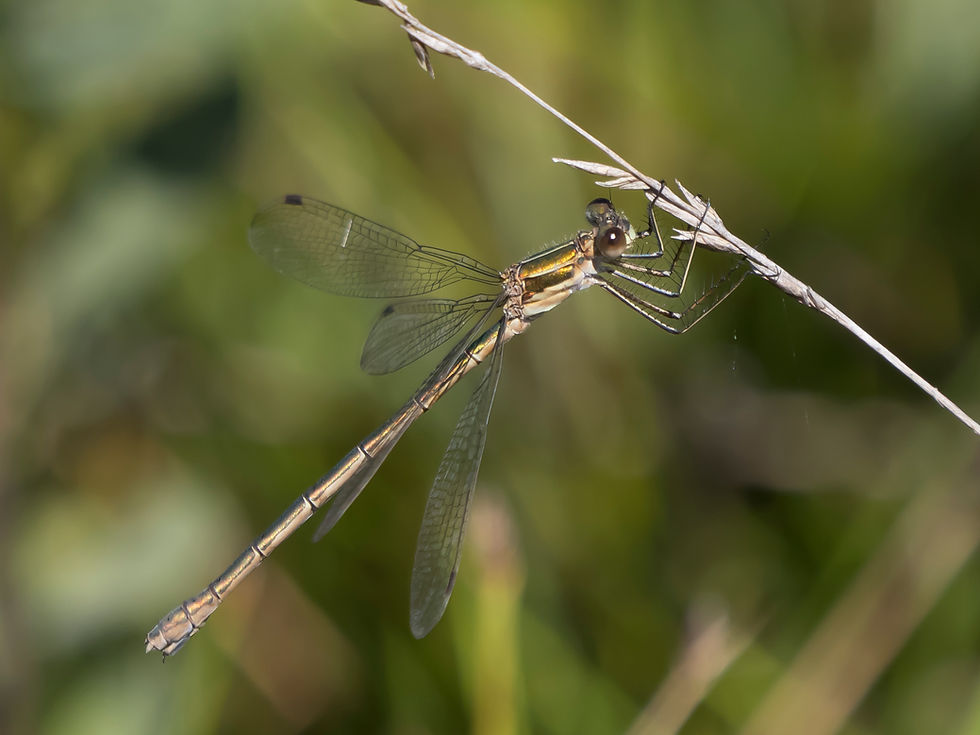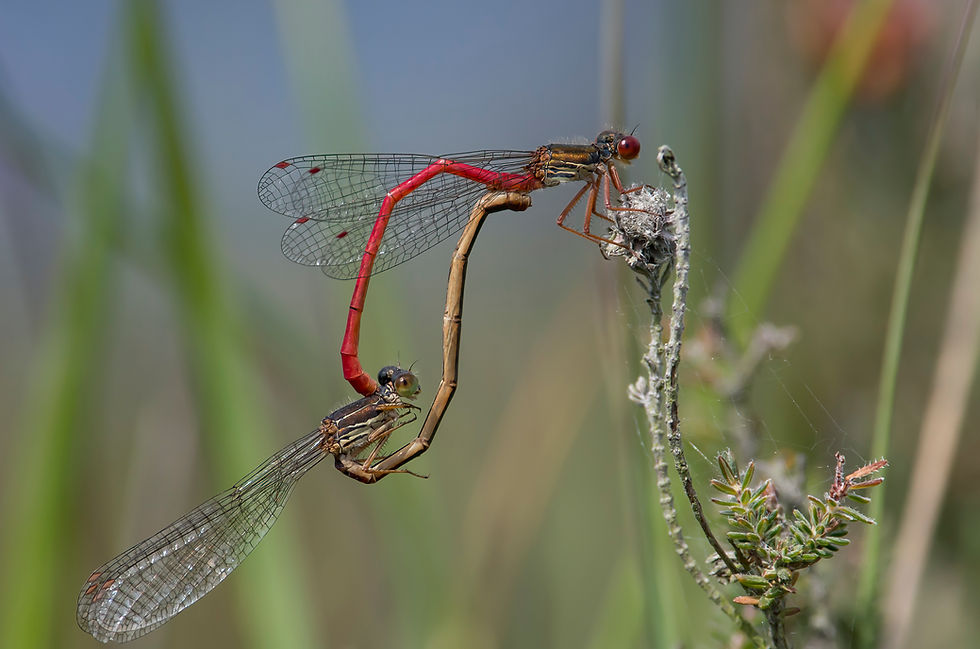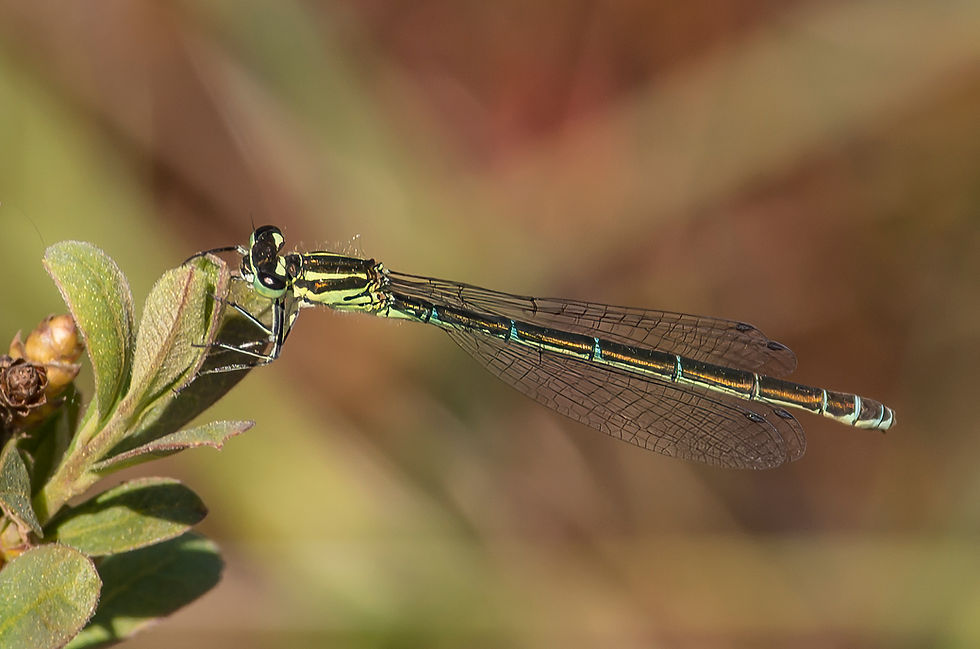
Zygoptera (Damselflies)
↓ Scroll for more, click a thumbnail to enlarge it. Species ordering follows that found in most popular field guides.
Beautiful Demoiselle (Calopteryx virgo)





Banded Demoiselle (Calopteryx splendens)




Emerald Damselfly (Lestes sponsa)




Willow Emerald Damselfly (Chalcolestes viridis)

Large Red Damselfly (Pyrrhosoma nymphula)


... The extent of black on the abdomen varies between this melanotum form and the previous photo. In melanotum, the antehumeral stripes on the thorax remain pale.



Small Red Damselfly (Ceriagrion tenellum)




White-legged Damselfly (Platycnemis pennipes)




Southern Damselfly (Coenagrion mercuriale)
Azure Damselfly (Coenagrion puella)







... The Mercury "winged helmet" shape on segment 2 of the abdomen gives the species its scientific name.

... Blue form female; most mature females have olive-green markings on the thorax and abdomen.

... The female eventually submerged for several minutes, inserting eggs into the stem of the Marsh St John's Wort. The male remained attached but didn't submerge completely.

... Damselflies (especially immatures and tenerals) often swing away to the other side of a plant stem when approached. The eyes don't have pupils, this appearance is an illusion due to the thousands of tube-shaped receptors in the eyes; imagine a bundle of short drinking straws and see what happens when you try to look down through them.
Common Blue Damselfly (Enallagma cyathigerum)



... The usual "drab" form female with olive-green markings; blue form females are fairly common in the New Forest, perhaps about ten per cent of the total.
Blue-tailed Damselfly
(Ischnura elegans)
Blue-tailed Damselfly females can be difficult to identify until you get used to them, since there are several colour forms, some of them changing into others as they mature; part-way mature adults add to the confusion. There is a very good explanation in the Curds' "Odo-nutters" website mentioned on the "About this site" page.

... This will mature into rufescens-obsoleta.


... Will mature into either andromorph or infuscans, though this one already seems to be heading towards andromorph.


... Some infuscans females have olive-green markings on the thorax rather than sandy-brown like this one.



... The male remained attached for a while (I don't think they do usually, with this species) but released its grip before being dragged under. I have read that this species inserts eggs into the plant tissue but here, they appear to be arranged in a spiral around the surface of the stem, which matches the movement of this female at the time.
Scarce Blue-tailed Damselfly (Ischnura pumilio)

... Almost fully mature. The thorax will become more blue and the wing spots will become more distinctly bicoloured.


Red-eyed Damselfly (Erythromma najas)


Small Red-eyed Damselfly (Erythromma viridulum)
